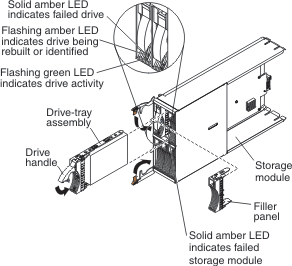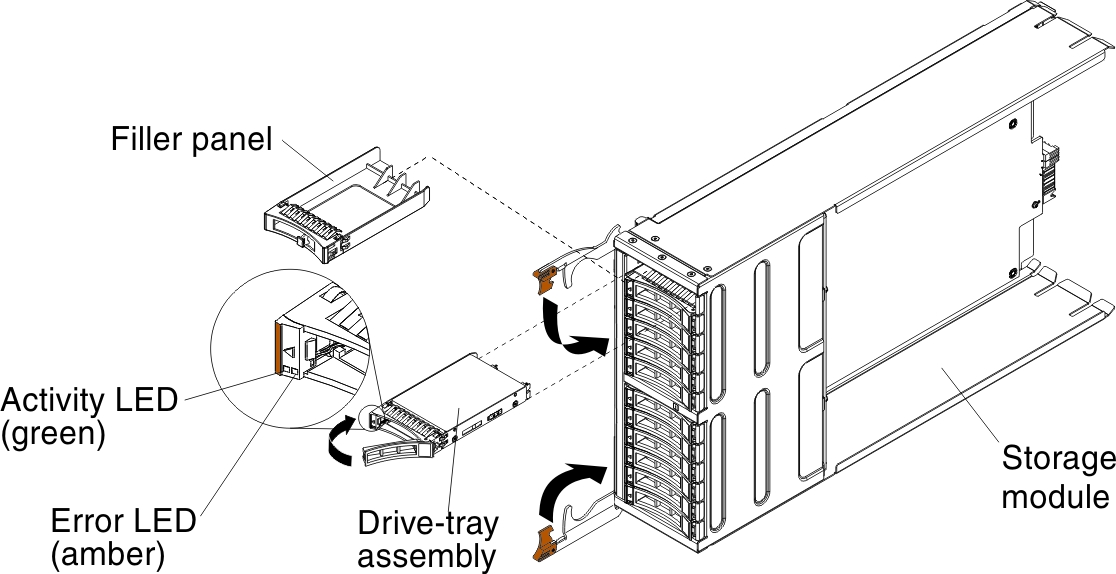Disk storage modules
You can install a maximum of two disk storage modules in the BladeCenter S chassis and each disk storage module contains hot-swap hard disk drives. A disk storage module and the hard disk drives installed in that disk storage module are commonly referred to as integrated shared storage because this storage is integrated in the BladeCenter S chassis and shared among the blade servers in the BladeCenter S system.
Each disk storage module can support up to six hot-swap, 3.5-inch or twelve hot-swap, 2.5-inch hard disk drives. For 3.5-inch hard disk drives, if you are installing SAS connectivity modules, both SAS and SATA hard disk drives are supported, and you can use both types of hard disk drives in each disk storage module. If you are installing SAS RAID controller modules, you must install SAS hard disk drives. For 2.5-inch hard disk drives, please note that only SAS hard disk drives are supported. Thus, only SAS RAID controllers can be used.
Graphic showing close up of 6-disk disk storage module and indicators

Graphic showing close up of 12-disk disk storage module and indicators

- SAS I/O modules. For the 6-disk storage module, you can choose to install either SAS connectivity modules or SAS RAID controller modules. As for the 12-disk storage module, only the SAS RAID controller module can be installed.NoteYou cannot mix these module types in the same
BladeCenter S chassis. - SAS connectivity module. At least one SAS connectivity module must be installed. If a single SAS connectivity module is installed, it controls access to both disk storage modules in the BladeCenter S chassis. If two SAS connectivity modules are installed, the module in I/O module bay 3 controls access to disk storage module 1, and the module in I/O module bay 4 controls access to disk storage module 2.
- SAS RAID controller module. Two SAS RAID controller modules must be installed, one in I/O module bay 3 and the other in I/O module bay 4. Each SAS RAID controller module will have access to both storage modules (for high availability).
- A SAS expansion card in each of the blade servers, which provides access through the SAS I/O modules in I/O module bays 3 and 4 to the SAS or SATA hard disk drives in each disk storage module. This only applies to the 6-disk storage module.
- Fault
- Solid (amber) when there is a disk storage module failure.
- Green
- Flashing when an operation, such as a read or a write, is being performed.
- Amber
- Flashing when the hard disk drive is being rebuilt (fast blink) or identified (slow blink).NoteWhen power is restored to the
BladeCenter S chassis after a complete loss of power and you have implemented the hard disk drives as a mirrored array, the fault light will blink as the hard disk drive is being resynchronized. This resynchronization occurs because the blade servers are attempting to power on before all of the disk storage modules and SAS connectivity modules or SAS RAID controller module are powered up and available. The mirrored array is accessible during resynchronization although performance may be slightly slower.
- Solid when there is a drive failure.